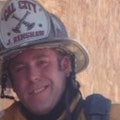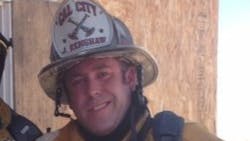Key Takeaways
- Fire chiefs who are at a department that lacks a dedicated human resources team require a strong understanding of labor law, department policy and human behavior.
- Fire chiefs who are a department’s de facto financial officer can be responsible for processing payroll, calculating overtime, managing accounts payable, reconciling credit card statements and signing checks.
- A fire chief’s responsibility for short- and long-term planning could include writing a formal strategic plan, conducting a community risk assessment, revisiting response protocols and/or initiating standards of cover analysis.
The rank of fire chief evolved significantly over time, growing in complexity and scope. As the fire service continues to change—driven by technological innovation, increased call volumes and shifting community expectations—the individuals who fill these roles must be agile, adaptive and calm; be ready to meet growing demands and lead in crisis; and ensure the organization fulfills its mission with excellence, accountability and vision.
Firefighters and company officers are the face of the fire service. They handle day-to-day emergency operations, interact regularly with the public and typically are the ones who community members think of when fire service comes to mind. In contrast, the fire chief’s work is largely behind the scenes. However, it’s this administrative work, often carried out in offices, meeting rooms and budget hearings, that ensures that the department runs smoothly, efficiently and safely.
In larger departments, a fire chief might be surrounded by a robust command staff—both uniformed and civilian—that’s tasked with helping to manage the many functions. In small- and medium-size agencies, the fire chief often swaps the fire helmet for a variety of other hats (e.g., human resources director, financial analyst, logistics officer, grant writer, training coordinator)—not out of choice but out of necessity. This constant shifting isn’t a sign of micromanagement or ego. It’s the operational reality for many departments that grapple with budget cuts, staffing shortages and/or lean organizational structures.
Well-oiled machine
This term often is used to describe an operation that runs with seamless efficiency. In the fire service, the administrative and operational sides of a department must function in unison. A successful department must be responsive in the field and sound behind the scenes. For fire chiefs who wear multiple hats, both areas become their responsibility, and balancing them is essential to the success and credibility of the department.
This balancing act demands a high level of situational awareness, organization and foresight. Prioritization becomes a daily task. Chiefs must determine which issues require immediate attention versus which can be planned methodically. The challenge is to give neither area short shrift. A fire chief who is too focused on operations might neglect strategic growth; one who is too mired in planning might become disconnected from front-line realities.
The successful fire chief must be able to zoom in on daily logistics and zoom out to see the larger picture.
Personnel
A fire chief’s daily planner can resemble a football coach’s playbook, full of scribbles, arrows, color codes and marginal notes. Amid this chaos lie critical tasks and timelines that must be met to keep the department running and its members supported.
Among the most demanding responsibilities is personnel management. This encompasses a wide range of duties: hiring, training, scheduling, mentoring, discipline and navigating interpersonal dynamics. Staffing and scheduling alone can become a daily grind. Chiefs must ensure that minimum staffing levels are met; approve or deny leave requests; find coverage for absences; and in some cases, step into shifts themselves to ensure operational readiness.
In departments that lack a dedicated human resources team, fire chiefs also might find themselves managing the intricacies of workers’ compensation claims, Family and Medical Leave Act compliance and disciplinary investigations. This requires a strong understanding of labor law, department policy and human behavior.
When grievances arise, they almost always land on the fire chief’s desk. The chief must serve as mediator, legal advisor and sometimes even therapist. In unionized departments, the fire chief also might take an active role in labor negotiations—advising city leadership, analyzing contract language and sitting at the bargaining table.
This aspect of the job demands emotional intelligence, patience and fairness. The fire chief is expected to lead with integrity and uphold accountability, all while preserving morale and fostering a positive culture.
Financial oversight
Although budgeting is a core responsibility of any executive-level officer, many fire chiefs—particularly those who are at smaller agencies—are responsible for far more than just producing an annual budget document. They are the de facto financial officer who is tasked with ensuring fiscal responsibility, transparency and sustainability. This work can include processing payroll, calculating overtime, managing accounts payable, reconciling credit card statements and signing checks. Fire chiefs often are expected to navigate complex funding mechanisms, such as tax millage adjustments, impact fees and capital bond issues, without the benefit of a dedicated finance team.
Grant funding introduces another layer of complexity. A chief might be solely responsible for researching grant opportunities, writing and submitting applications, managing award compliance and completing required reporting.
Budgeting itself becomes a strategic endeavor that involves detailed financial forecasting, capital improvement planning, apparatus replacement scheduling and long-term infrastructure investment. A fire chief must present these priorities to a city council or board of supervisors in a way that earns trust, demonstrates value and secures funding. In this arena, communication skills are just as important as financial literacy.
Strategic planning & growth
A successful fire chief also must look to the future. Long- and short-term planning is essential to ensure that the department grows alongside the community that it serves. This could mean writing a formal strategic plan, conducting a community risk assessment, revising response protocols or initiating a standards of cover analysis. In rapidly developing communities, fire chiefs must assess where new stations or units are needed. This isn’t just a matter of geography; it requires data analysis of call volume, response times and ISO ratings.
Some chiefs collaborate with members of planning and zoning boards to track development trends or to advocate for changes in building codes or fire prevention ordinances. These efforts require cross-department collaboration, political savvy and public engagement.
Strategic thinking also must account for emerging risks: active-shooter events, cybersecurity threats and public health emergencies. The fire chief must remain educated about evolving hazards.
Returning to the fireground
Many fire chiefs, particularly those who serve in smaller departments, remain operationally active. In agencies that have limited command staff, the fire chief might serve as the incident commander on working fires or other complex incidents. When others take command, the chief might step into the role of a division supervisor, public information officer or safety officer or operate on a hoseline.
Operational roles don’t stop on the fireground. Fire chiefs in lean organizations might serve as training officer, fire marshal and/or inspector.
In departments that have fewer than 20–30 personnel, it isn’t unusual for the fire chief to handle all of the above—sometimes in a single day.
The fire chief as CEO
The role of the fire chief mirrors that of a chief executive officer in numerous ways. Both of these people must lead with vision, manage complex budgets, engage stakeholders and plan for long-term sustainability. In the fire service, often, this leadership is more hands-on.
Some find the variety invigorating. It keeps them engaged and connected to every layer of the organization. Others find the constant shifting of roles overwhelming, particularly in an environment in which resources are scarce and support is minimal. The result can be burnout, decision fatigue and loss of strategic focus.
The role of fire chief isn’t for the faint of heart. However, for those who embrace it, the opportunity to lead, serve and shape the future of their department is unmatched. A fire chief stewards a mission.
About the Author

Jared Renshaw
Jared Renshaw has more than 20 years of experience in the fire service. He started his fire service career with the Fairview Volunteer Fire Department in South Fayette Township, PA. Renshaw also served with career departments in South Carolina and California and since 2015 has served as the fire commissioner with the Western Berks Fire Department in Berks County, PA. He holds a bachelor's degree in fire service administration and is designated as a Chief Fire Officer through the Center for Public Safety Excellence (CPSE). Renshaw served as a member of the board of directors for the Pennsylvania Fire and Emergency Services Institute. He is a member of the advisory boards for Firehouse and FireFusion.
